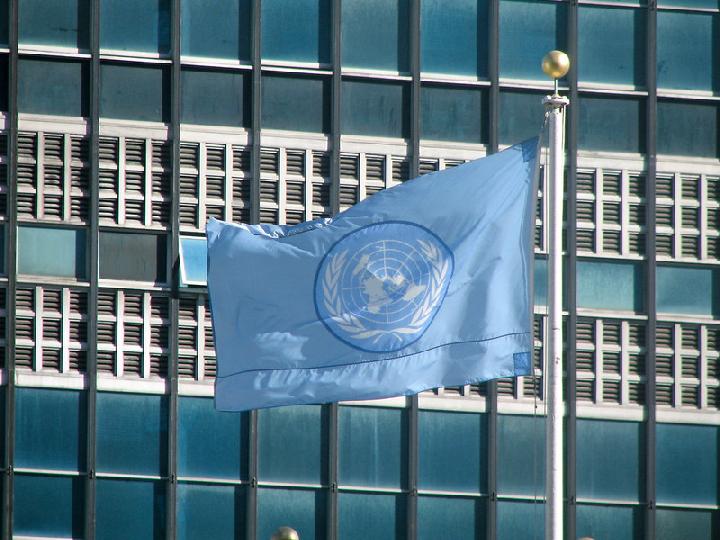TEMPO.CO, Jakarta - Out of all continents, Asia holds two major distinctions: being the world’s largest and most populous continent. It accounts for about 60 percent of the world’s total population and covers about 30 percent of the Earth’s total surface.
Beyond its size and population, Asia boasts an array of geophysical wonders. Among these, the continent’s largest lakes stand out. Not just as natural landmarks, they are also a vital element of Asia’s ecological, cultural, and economic identity.
Spanning 386,400 square kilometers, the Caspian Sea tops the list of the largest lakes in Asia. This massive body of water, along with others on the continent, supports life and livelihoods across Asia, playing critical roles in agriculture, tourism, and beyond.
Here’s a look at the 10 largest lakes in Asia, according to WorldAtlas and CNBC.
List of the Largest Lakes in Asia
1. Caspian Sea - 386,400 km²
Cited as the largest lake in Asia, the Caspian Sea is also the world’s largest inland water body, covering a total area of 386,400 square kilometers. It is bordered by Kazakhstan, Russia, Azerbaijan, Iran, and Turkmenistan, and plays an important role in supporting a unique ecosystem and Eurasia’s economy.
One of its most notable native species, the sturgeon, thrives in its waters and significantly contributes to the region's economy as the primary source of caviar. However, this economic value comes at a high cost, as overfishing has increasingly threatened the Caspian Sea’s biodiversity.
2. Lake Baikal - 31,722 km²
With Russia ranked as the second country with the most lakes, Lake Baikal stands as a true testament to that reputation. Estimated to be over 25 million years old, it is the oldest freshwater lake on the planet and holds more than 23 percent of the world's freshwater supply. Its depth is equally remarkable, plunging to a maximum of 1,624 meters—the world’s deepest.
Lake Baikal is also known for its exceptional biodiversity. A significant portion of its flora and fauna is endemic, including the unique Baikal seal and the green algae Tetraspora. In 1996, Lake Baikal was designated a UNESCO World Heritage Site.
3. Lake Balkhash – 16,400 km²
Though its size has fluctuated over time, Lake Balkhash remains one of the largest lakes in Asia. It uniquely contains a combination of waters, with the western part containing freshwater and the eastern part being saline.
Located entirely within Kazakhstan, Lake Balkhash is a popular destination for eco-tourism and nature enthusiasts. The lake supports a diverse ecosystem, with six native fish species, over 120 species of birds, and lush green surroundings that enhance its natural beauty.
4. Lake Taymyr – 6,990 km²
Located in the central region of Russia’s Taymyr Peninsula, Lake Taymyr is Asia’s fourth-largest lake. The lake's vast size is matched by its irregular shape. Due to its shallow depth, it freezes rapidly during the long Arctic winters. According to Lakepedia, Lake Taymyr and its surrounding areas were incorporated into a protected natural reserve in 1983. It is home to a variety of cold-adapted species, including muksun and loach, both well-suited to the lake’s frigid temperatures.
5. Issyk-Kul Lake – 6,236 km²
With a maximum depth of 668 meters, Issyk-Kul Lake is ranked among the world’s deepest lakes. Its name, which means "Warm Lake" in Kyrgyz, reflects its unique characteristic of never freezing thanks to geothermal springs and saline water.
Framed by the majestic Tien Shan mountains, this lake is famously known for its picturesque scenery and rich underwater biodiversity. Several highly threatened endemic fish species like Schmidt’s dace, Marinka, and naked Osman call Issyk-Kul Lake home.
6. Lake Urmia – 6,001 km²
Among the largest lakes in Asia, Lake Urmia has shrunk significantly in recent years. It was once the second-largest saltwater lake in the world. It has experienced an especially severe retreat in its southern portion, revealing vast stretches of desolate salt crusts. This unfortunate decline is largely attributed to a combination of factors, including prolonged droughts, intensive agricultural water use, and dam construction on its feeder rivers, as NASA Earth Observatory highlights.
7. Qinghai Lake – 4,543 km²
Qinghai Lake holds international significance due to its vast and unique plateau inland wetland ecosystem, which provides an ideal habitat for a wide variety of wildlife. Each year, hundreds of thousands of migratory birds stop at the lake to rest, with some even breeding here.
As China’s largest saltwater lake, Qinghai Lake became endorheic (closed drainage) following the uplift of the Qinghai-Tibetan Plateau. Over time, the lake’s salinity increased, leaving the naked carp and stone loaches as the only fish species that can survive in its waters today.
8. Lake Khanka – 4,190 km²
Lake Khanka spans two countries, with 72 percent of its area in Russia and the remaining 28 percent in China. It is rich in biodiversity, home to over 75 species of fish and the largest population of the extremely rare Chinese soft-shelled turtle.
However, Lake Khanka has been facing moderate pollution due to high concentrations of metal ion content stemming from the heavy use of fertilizers in rice-growing areas. Recognizing its ecological value, the Russian Federation designated Lake Khanka as a Ramsar Wetland Site in 1971, under the Ramsar Convention.
9. Sarygamysh Lake – 3,955 km²
Covering 3,955 square kilometers, Swygamsysh Lake is one of the largest lakes in Asia that straddles the border of two countries: Turkmenistan and Uzbekistan. It receives its inflows primarily from the Khorezm Oasis and the Amu Darya River, making the waters nutrient-rich and attractive to a wide variety of bird species. However, Sarygamysh Lake suffers from high salinity and pollution.
10. Van Lake – 3,755 km²
Rounding out the list, Van Lake is a saline soda lake located in eastern Turkey. Often referred to as "The Pearl of the East," this area consists of four islands: Akdamar, Çarpanak, Kuts, and Arter.
Beyond being a natural marvel, Van Lake also holds deep cultural significance, most notably represented by landmarks like the Armenian Cathedral of the Holy Cross on Akdamar Island. Beneath its saline waters, various brackish-water fish species such as pearl mullet and stone loach thrive.
From the vast expanses of the Caspian Sea to the culturally rich waters of Van Lake, these largest lakes in Asia and are true lifelines of biodiversity, sources of livelihood, and mirrors of the continent’s ecological complexity. If you’re impressed by the continent’s massive water bodies, take your curiosity to new heights by exploring the highest mountains in Asia.
Editor's Choice: 4 Tips to Choose a Resort for a Perfect Vacation
Click here to get the latest news updates from Tempo on Google News
















































